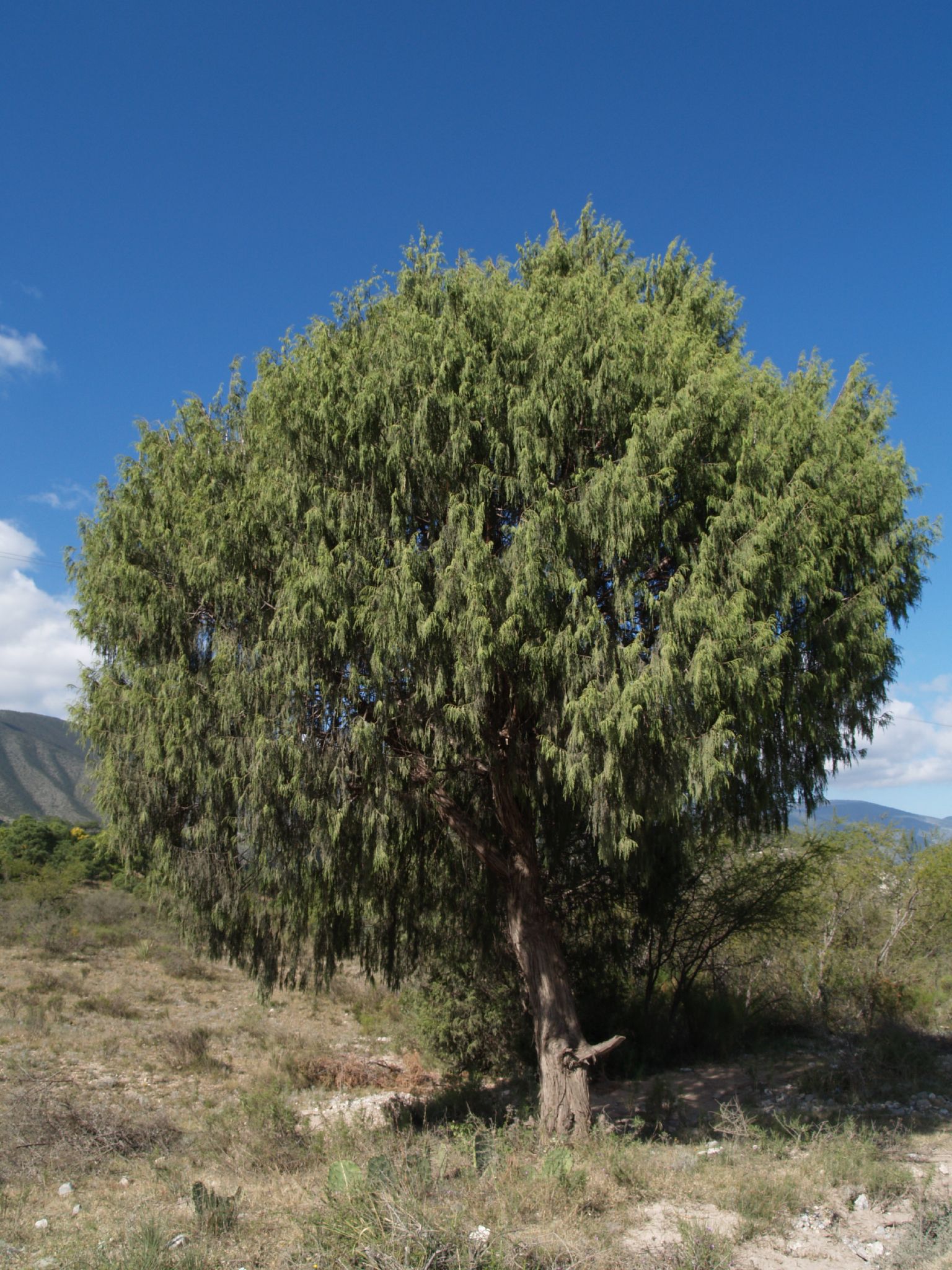Drooping juniper
(Juniperus flaccida flaccida)

Description
Juniperus flaccida (drooping juniper, weeping juniper or Mexican juniper; Native American names include tláscal) is a large shrub or small tree reaching 5–10 m (rarely to 15 m) tall. It is native to central and northern Mexico (from Oaxaca northward) and the extreme southwest of Texas, United States (Brewster County). It grows at moderate altitudes of 800-2,600 m, on dry soils.The bark is brown, with stringy vertical fissuring. The shoots are strongly pendulous, 1-1.2 mm diameter, and often borne in flattened sprays (the only juniper commonly showing this character). The leaves are arranged in opposite decussate pairs; the adult leaves are scale-like, 2–4 mm long (to 7 mm on lead shoots) and 1-1.5 mm broad. The juvenile leaves (on young seedlings only) are needle-like, 5–10 mm long. The cones are berry-like, 8–20 mm in diameter, green maturing brown, and contain 6-12 seeds (the most seeds per cone of any juniper); they are mature in about 18 months. The male cones are 3–5 mm long, and shed their pollen in spring. It is largely dioecious, producing cones of only one sex on each tree.
Taxonomic tree:







